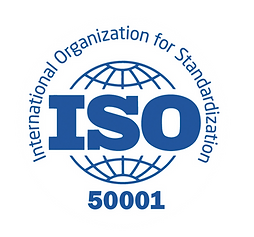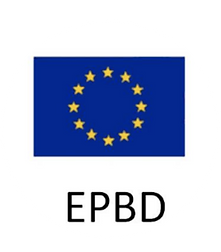Legislation & Standards.
ISO50001 Energy Management Certification
Global standard for improving energy management. Energy Efficiency Directive (EED) introduced by the European Commission in 2012 to ensure large organisations become more energy efficient. ISO50001 core concepts include:
-
Management responsibility
-
Energy review
-
Energy baseline
-
Performance indicators
-
Communication
-
Documentation
-
Non-conformity
-
Management reviews

Energy Savings Opportunity Scheme
Mandatory UK Government, applicable to businesses with 250+ employees, Turnover >£44M and annual balance sheet >£38M
Assessment every 4 years
-
Audits of energy used across the Estate
-
Companies must account for 95% of total energy consumed
-
Annual reporting including progress reports
-
Additional data capture required in the compliance notification
-
Introduction of an energy intensity metric (measured by the quantity of energy required per unit output or activity)
The Energy Act 2023: UK Government Net Zero programme and target for 2050

Building Standards: LEED, BREEAM, WELL
LEED: Leadership in Energy and Environmental Design (green buildings rating system)
BREEAM: Building Research Establishment Environmental Assessment Methodology
WELL Building Institute: is a performance-based system for measuring, certifying, and monitoring features of the built environment that impact human health and well-being

EU Legislation
Energy Performance of Buildings Directive (EU2018/844) and Directive on Energy Efficiency (EU2018/2002). Overall energy consumption by 2030 should not exceed 992.5 million tonnes of oil equivalent (Mtoe) for primary energy and 763 Mtoe for final energy.
EU are targeting an additional 11.7% reduction in energy consumption by 2030
-
EU countries are required to achieve cumulative end use energy savings for the entire obligation period (2021-2030), equivalent to new annual savings of >0.8% of final energy consumption in 2021-2023, >1.3% 2024-2025, >1.5% 2026-2027 and >1.9% 2028-2030

EN50160 Power Quality Standard
Gives the main voltage parameters and their permissible deviation ranges at the customer's point of common coupling in public low voltage (LV) and medium voltage (MV) electricity distribution systems, under normal operating conditions
MID Certification (MID 2014/32/EU)
Gives the main voltage parameters and their permissible deviation ranges at the customer's point of common coupling in public low voltage (LV) and medium voltage (MV) electricity distribution systems, under normal operating conditions
Facts & Figures
-
EU data centres are projected to account for 3.2% of electricity demand by 2030, equivalent to an 18.5% jump from 2018
-
Concerted effort across Europe to reduce energy demand (particularly gas)
-
Hidden crisis relating to the impact of water consumption
-
Global data centre electricity consumption in 2022 at circa 340TWh, equivalent to 1.5% of global final electricity demand. For context, the UK final electricity consumption for 2022 was 96.2TWh.
-
Data centre and data transmission networks equate to 1% of energy related GHG emissions.
-
AI and Machine Learning programmes are placing unprecedented power and cooling demands across new and legacy environments
-
EU to consider the introduction of data centre labels detailing energy and water usage
-
According to a study conducted by Uptime Institute, global data centre outages have increased by 16% since 2021
Data Centre/Data Transmission Networks
Key Drivers:
-
Any meaningful Sustainability Programme must include the measurement, reporting, understanding and continuous improvement in the efficiency of all power and energy related parameters across the entire Estate
-
Mapping of when, where, and how energy is consumed – combined with event/‘out of norm’ analysis
-
Centralised management and reporting of multiple sites/geographical locations
-
Estate and site wide views of utilities, total consumptions and the granular monitoring of plant equipment, sub distribution and individual payloads to support operational efficiency strategies
-
Simplify the monitoring of estate wide issues associated with Power Quality
-
Provide highly accurate measurement data which is required as the foundation for compliance and business reporting
-
Resilience and uptime
-
Operational efficiencies – reducing costs, shortened ROI expectations
-
How to deploy granular monitoring across legacy sites – minimising downtime
-
User defined thresholds (raising alert flags) across key metrics will simplify the data analysis process and therefore by default, allow savings plans to be implemented quickly
-
Reduce the need for periodic shutdowns and support planned maintenance regimes through continuous Residual Current Monitoring
-
Reduce time spent on time consuming energy data gathering and analysis
-
Real time monitoring
-
High Density solutions to support AI and Machine Learning
-
Data centre efficiency: Power Usage Effectiveness as the chosen metric.

